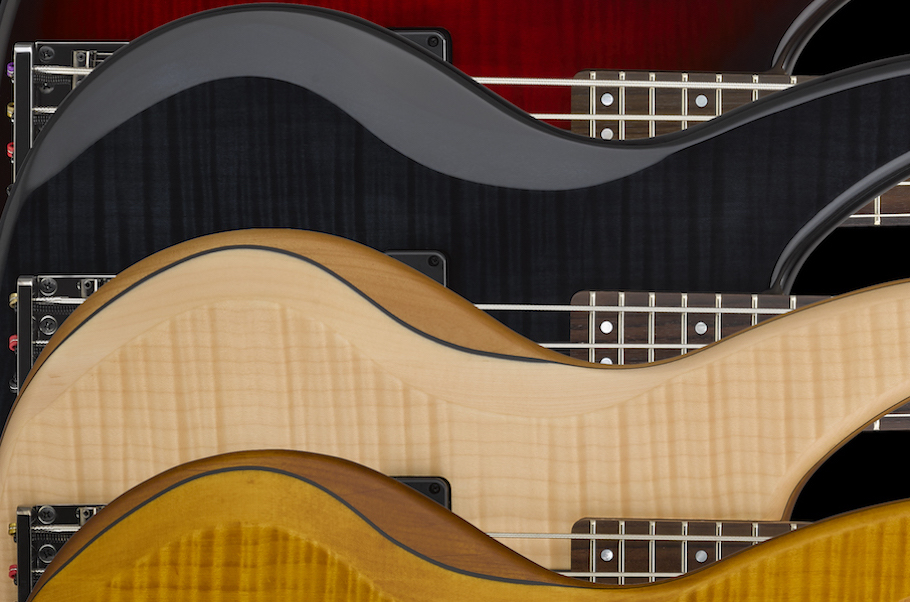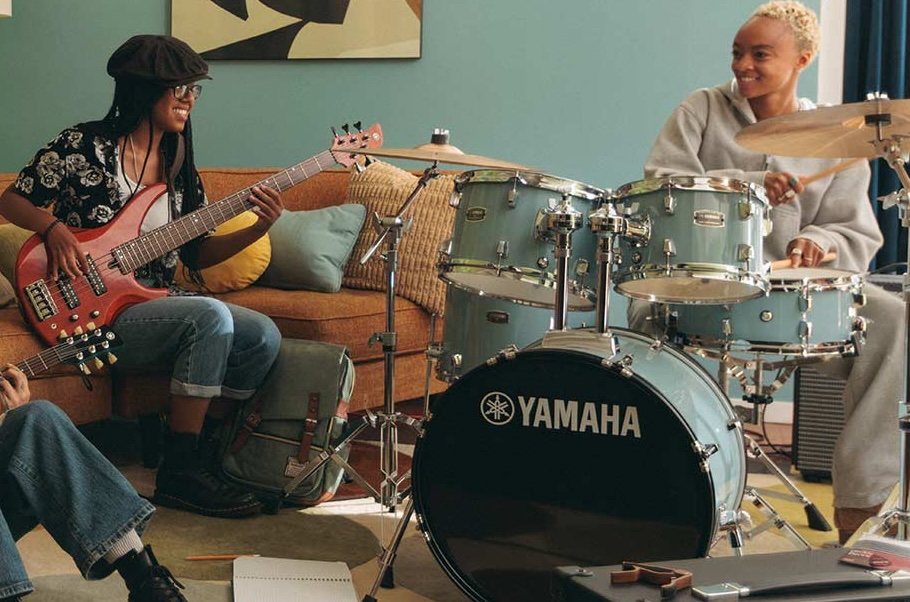Bass Tonality
What goes into great bass tone?
Imagine you’re in a music store. You see a bass that gets your heart racing, but it’s hanging high on a wall. When you ask an employee for help, he says, “Sure!” and runs off to get a step stool.
When he’s not back a couple minutes later, you ask another employee. He’s on the phone, though, so he whispers a noncommittal “sure” and continues his conversation.
A third employee wanders in, but when you tell her that this just might be the bass of your dreams, she says, “suuuuuure” and backs away from you like you’re crazy.
Just then, the first employee returns with a step stool. He grins and asks, “You sure you want this bass?”
Each “sure” had a slightly different meaning. What set them apart? Tone.
The tone of your voice is just as important as what you say. In fact, the way you say something often conveys more meaning than the words themselves. It can be helpful to think of bass tone the same way: It’s the first thing we hear when someone plugs in, and a player’s tonal choices for each musical moment says a lot about them.
DEVELOPING GOOD TONE
Just as everyone has a distinctive fingerprint, skilled musicians develop a particular way of expressing themselves — a kind of “toneprint.” With practice, we first learn to imitate other players’ voices and then eventually develop our own. Part of the fun of becoming a proficient musician is learning to balance one’s natural tendencies with the needs of each situation, which is why the definition of “good tone” depends on the gig: What works for a death metal show won’t cut it at a roots reggae festival, and neither of those tones is quite right for a church gig, a salsa dance floor or a bluegrass session.
As bassists, our tonal decisions can make us or break us. In fact, we buy basses not just for feel, but for specific tones too — but where exactly does tone come from?
WEAPON OF CHOICE
Much of a bass’ tonality comes from the instrument itself, starting with the tonewoods used in its construction — not just the body, but the neck and fingerboard as well. The bridge materials and design also have a big impact on tone, as does the way the neck is attached to the body and the height of the strings (the “action”).
Equally impactful are the electronics inside the bass, starting with the type, number and selection of pickups. In addition, a bass with active electronics can sound quite different from one with passive electronics, and of course the settings of the tone controls themselves will also, unsurprisingly, have a major effect on tonality.


Last but not least, your choice of strings (roundwound vs. flatwound, new vs. old, gauge thickness, etc.) can make a bass sound like a completely new instrument, as can a good setup.
As a bass geek with wide-ranging musical tastes, I’m fascinated by instruments that have come to be associated with certain genres and tones. Beginning in the 1970s, when both music industry advertising and bass-building took a quantum leap forward, the instrument of choice used by critically and/or commercially successful bassists could cement an instrument’s reputation for excelling in a particular genre. The rise of custom “signature” basses like those offered by Yamaha, along with the wide variety of tonally flexible mass-market instruments available today, have begun to change the way we think, but some basses are still closely linked with styles, eras and sounds.
IT’S IN THE HANDS
When people say “tone is in the hands,” it means that your way of expressing yourself will come through whatever instrument you play. In other words, a lot of bass tonality comes from you. The more you’ve trained your hands, the more sonic options you’ll have.
For example, having the ability to use a pick or play fingerstyle gives you a great deal of versatility, as do playing techniques like tapping, strumming or playing harmonics, all of which give you access to a universe of tone. Combining these with other choices, such as fretting-hand grip and picking-hand placement, increases your ability to reproduce a wide range of modern bass tones and conjure flavors that invoke guitar, synth or upright bass. If you regularly play several different basses, you’re most likely learning to modify your technique to bring out the best in each instrument, whether it’s using a different touch on passive and active basses or muting effectively on 5- and 6-string basses.
AMP, SPEAKER AND EFFECTS CHOICES
Your tone begins with your instrument and your hands, but if you use an amplifier, it will play a large role too. (An amp isn’t always required, since bass is often recorded direct, and in live performance, sometimes it’s fed into a PA system that way as well).
The characteristics of your chosen rig — the tonal signature and power-handling capabilities of your preamp (if you’re using one), amp and speaker(s), as well as speaker size — are all crucial factors in the search for a sound that’s uniquely yours. Especially if your bass has passive electronics (or is in passive mode), the preamp inside your amp is responsible for a crucial stage in your tone. If your bass has active electronics, consider how its circuitry jibes with your amp’s preamp. In fact, adding, removing, engaging or bypassing a preamp is one of the most popular ways to achieve a desired tone.
Last but not least, effects devices and pedals offer dozens of ways to subtly (or radically) shape your bass tone, although it’s worth mentioning that some poor-quality pedals may degrade your signal at the same time (a phenomenon known as “tone suck”). The addition of compression, for example, can make a huge difference in terms of sustain, as well as warming up your sound and giving it extra “thump.” Other effects, such as delay, flanging, phasing, chorusing, harmonizing, ring modulation and envelope filters can add a distinctive stamp to your bass parts — some players even like adding a touch of distortion at times, though it’s usually something to be avoided.
Studio musicians collaborate with engineers to deliver a bass tone that sits well in a mix, while performing musicians work with sound techs like FOH (Front Of House) and monitor mixing engineers to maintain consistent tone from venue to venue. Some players collect multiple basses that allow quick access to specific sounds, while others become adept at pulling dozens of distinct tones from a single instrument. But for most of us, the idea of “perfect tone” is a moving target, so have fun experimenting while staying open to what the song and situation needs. And the next time a bass line stops you in your tracks, take a second to think about all the components that came together to deliver that big, beautiful gift to your ears, and smile!
POSTSCRIPT: SOME COOL BASS TONES
Here are some examples of tonal settings you might want to try. These audio clips were all created with a Yamaha BB435 recorded direct — no amp, no effects. With its dual pickups (bridge and neck — each with its own volume control) and a Master Tone knob, this is a bass that offers a world of sonic options.
Turning both pickups and the tone knob all the way on is a great starting place for a bold tone that can cut through a mix:
Both pickups wide open and tone halfway up is a quick recipe for old-school slap tone like this:
Try turning both pickups all the way on, rolling the treble off, muting with your picking-hand palm and playing with your thumb for tone like this:
For a different flavor, use just the bridge pickup, add just a touch of treble, and mute with both hands:
Or, using just the neck pickup, roll off your treble and use your picking hand on the neck — far away from the pickups — for a tone reminiscent of fretless or synth bass:














